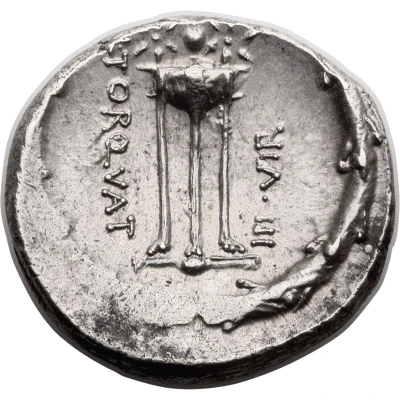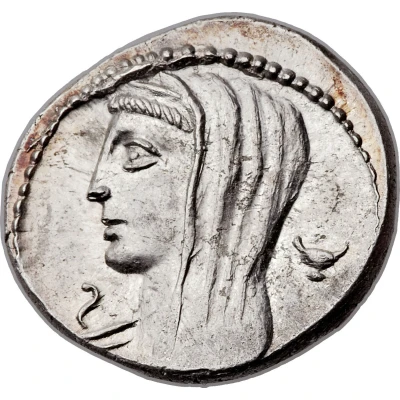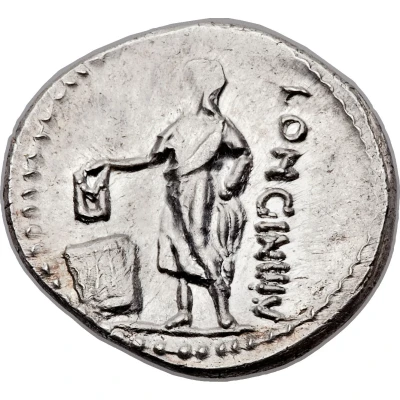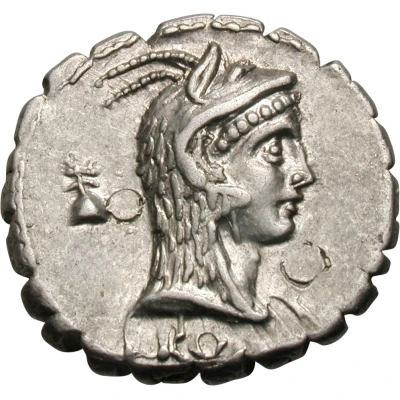
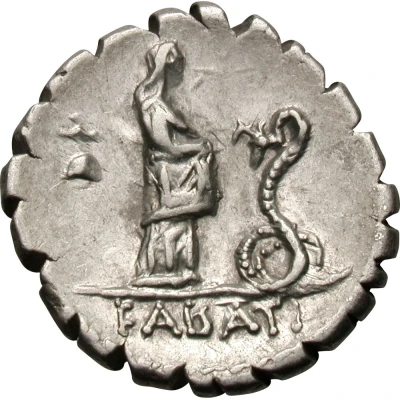

© Heritage Auctions
Denarius serratus Roscia: Lucius Roscius Fabatus; L•ROSCI / FABATI 64 BC
64 BC year| Silver (.950) | 3.77 g | 19 mm |
| Issuer | Rome › Roman Republic (509 BC - 27 BC) |
|---|---|
| Period | Republic (509 BC - 27 BC) |
| Type | Standard circulation coin |
| Year | 64 BC |
| Value | Denarius (1) |
| Currency | Denarius of 16 Asses (141 – 27 BC) |
| Composition | Silver (.950) |
| Weight | 3.77 g |
| Diameter | 19 mm |
| Thickness | 1.9 mm |
| Shape | Round (irregular) |
| Technique | Hammered |
| Orientation | Variable alignment ↺ |
| Demonetized | Yes |
| Updated | 2024-10-06 |
| Numista | N#33240 |
|---|---|
| Rarity index | 90% |
Reverse
Maiden standing right, feeding snake erect before her; behind, control-symbol.
Part of moneyer mark in exergue.
Script: Latin
Lettering: FABATI
Translation: Fabatus
Edge
Serrated
Comment
The gens Roscia was a plebeian family originally from Lanuvia, where Juno Sospita Magna Regina was worshiped with particular devotion. Coins of this family are all silver and serrated, and bearing the head of the goddess covered with a goat skin.Interesting fact
One interesting fact about the Denarius serratus coin is that it features a unique design on its reverse side, which depicts a serrated edge, giving the coin its name "serratus." This design was used to prevent counterfeiting and to make the coin easily identifiable as authentic.
Price
| Date | Mintage | VG | F | VF | XF | AU | UNC |
|---|---|---|---|---|---|---|---|
| ND (-64) | - | - | - | - | - | - |
Values in the table are based on evaluations by sales realized on Internet platforms. They serve as an indication only for Denarius serratus (Roscia: Lucius Roscius Fabatus; L•ROSCI / FABATI) (64 BC) coin.

